When Hands for Peacemaking teams travel to Guatemala, they are provided with bits of information about where they are going and the people whom we will serve, so this post will give you an idea of where we will work: the village Nuevo Malacatan Rancho Palmeras, or Rancho Palmeras for short.
The most striking thing to me is how isolated the village is from others, at least according to what I can see on Google maps, although often we’ve found the villages that dot the region don’t even show up. Rancho Palmeras does show. It’s way to the east of where we have worked before and sits all by itself as a lonely outpost at the end of a long road. Marco Tulio Maldonado, Hands for Peacemaking’s national director who will be with us, assures me it is about a 22-mile drive from our base headquarters in Santa Cruz Barillas (according to their vehicle tachometer), but Google maps puts the distance at closer to 40 miles. Either way, both indicate it’s about a three-hour drive over twisty, paved and bumpy gravel roads to get there.
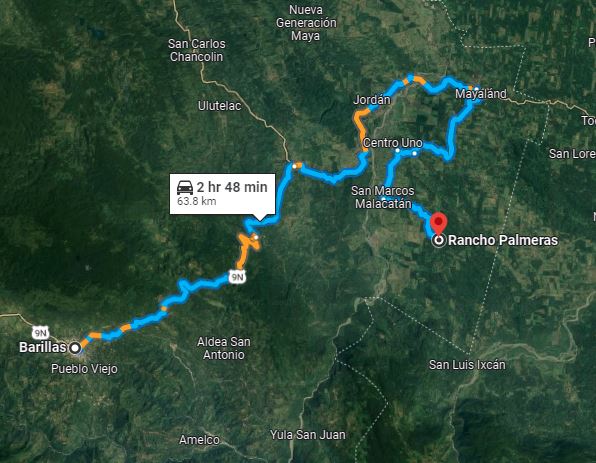
This, of course, will be in addition to the more than 16 hours it will take our team to get to Barillas from Guatemala City over the first two days after landing, with the second day being along some fairly sketchy roads, including crossing over the highest point in Central America, an 11,000-foot pass in the Sierra Madre mountain range.
When I look at the map of Rancho Palmeras, I can see no apparent water sources nearby. The closest river is the Rio Ixcan, about two-and-a-half miles away, and there are no lakes or ponds to be found in the satellite imagery. That means that whatever water the villagers use (when not in rainy season) must be hauled in, mostly in jugs on the backs of women and children. At 1050 feet above sea level, the village is lower than most where we’ve worked before and it could be hot and dusty, just what we need as we trudge around and install stoves in often tight conditions. If time and circumstances permit, I’ll see if it might be possible for the team to take a dip in the river to cool off a bit, so local snakes and bugs be warned. There is no electrical power in the village – our lights, stove and refrigerator will be powered by a generator over the four days we are there.
In this village lives a woman named Diana Lucas Vicente, who suffers from epilepsy and occasionally has epileptic seizures. Usually, her husband is around but one day last September he left to run some errands while she prepared their dinner. A sudden epileptic attack made her tumble right next to the cooking fire in their home. When she fell her hand brushed the flames, causing severe burns. Her injury stands as an example of the very type of problem we solve by installing wood stoves in each home. Our team – and the village – is fortunate that we were able to raise enough funds to install a stove in all 110 homes, surpassing our initial goal of eighty.
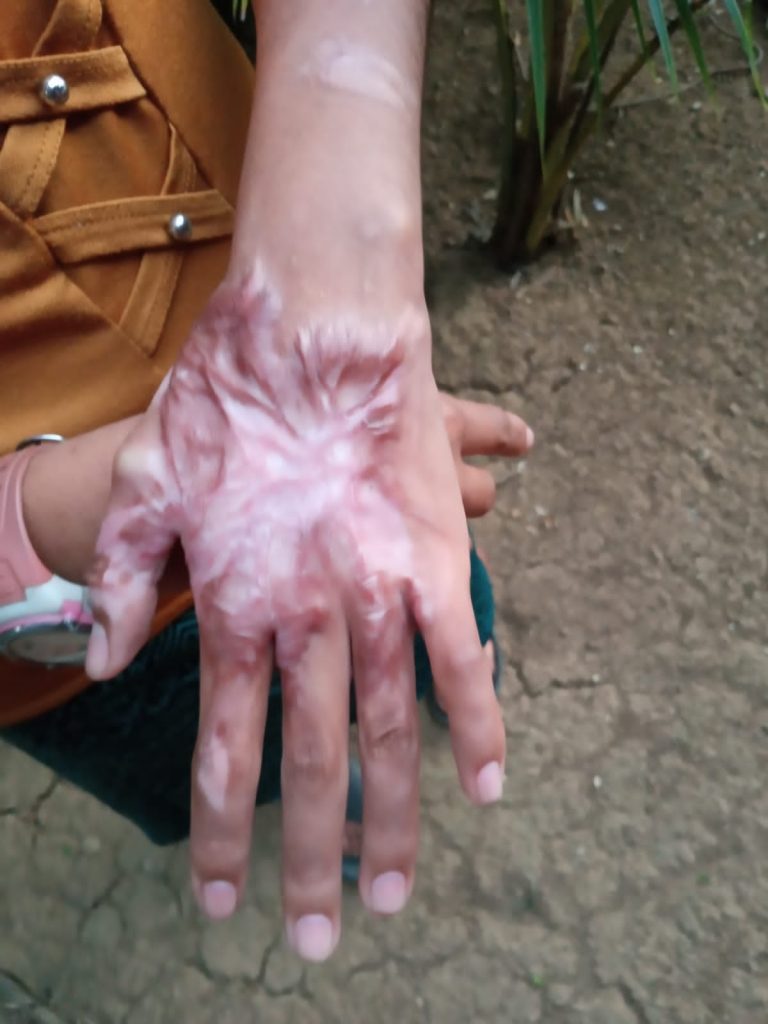

Another villager, Delia Perez, was also cooking recently when a pot of boiling water spilled on her feet, severely scalding them. We’ve also learned that three children in Rancho Palmeras, one aged two and the others at eight months, were diagnosed on April 8 as suffering from chronic diarrhea, another issue we hope to address by providing water filters to each home.
And, due to donor kindness that has allowed us to exceed our initial fundraising goals, we will be able to help the 476 inhabitants of Rancho Palmeras in other ways too, especially the school children. Each of the 132 students in their primary school will receive a desperately needed school desk – I’ll let the images below reveal the story of what they are using now. Each of their four classroom teachers will also receive a new desk, along with a white board and sturdy pencil sharpeners like many of you remember using in class. Like the stoves, the desks and whiteboards are all manufactured at the Aller Skills Center by Hands for Peacemaking staff in Barillas. We will also supply two new large-capacity water tanks for each of the two schools, replacing the worn and unsanitary looking cisterns, along with other supplies that I’ll detail in another post. One school in Rancho Palmeras serves elementary students and the other seventh through ninth graders.

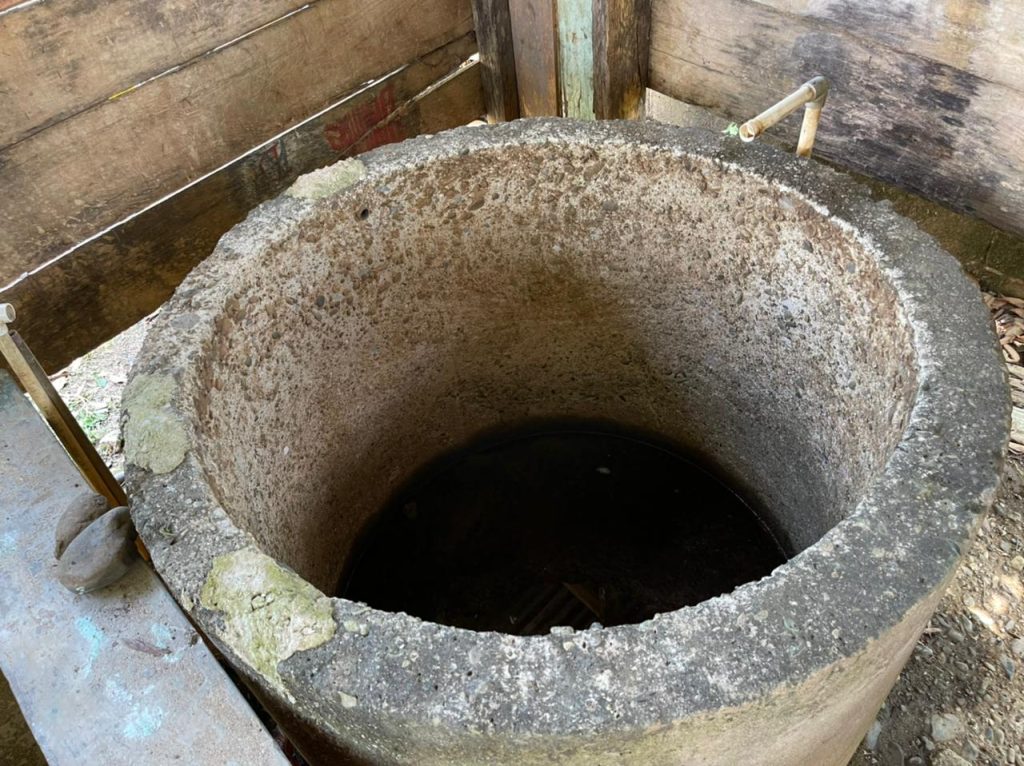
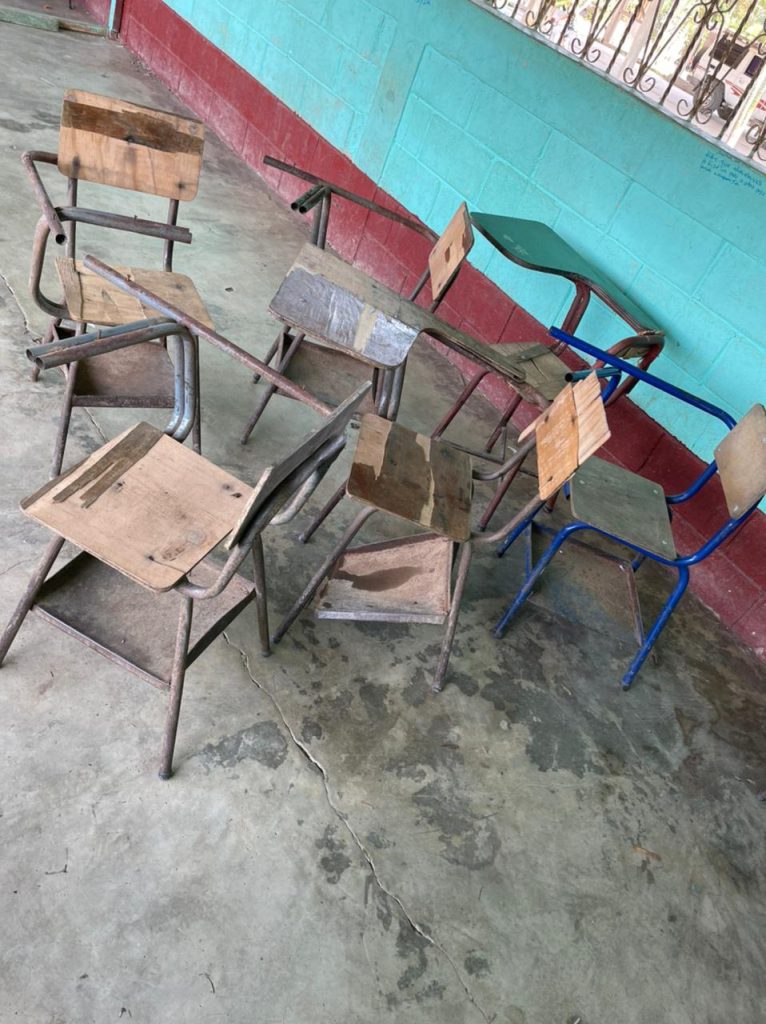
Rancho Palmeras is served by two health practitioners who do in-home wellness checks, and two midwives. Besides diarrhea, a common malady in the village is malnutrition – there are currently five known cases. Most villagers cook with firewood over an open stove or “three stone” fire pits, in unhealthy conditions as the smoke swirls around the confined space and rafters of the home.
As we have seen before most of the villagers live in dirt-floored homes with wood planked sides and a sheet metal roof. A few will live in much nicer dwellings, commonly afforded with funds sent by family members who are now or have worked in the U.S. The village was founded by twenty families in 1983. Villagers typically make about $6.67 a day working in the fields to grow crops such as corn, beans, and cardamom (Since 2000 Guatemala has been the world’s largest producer of that spice).


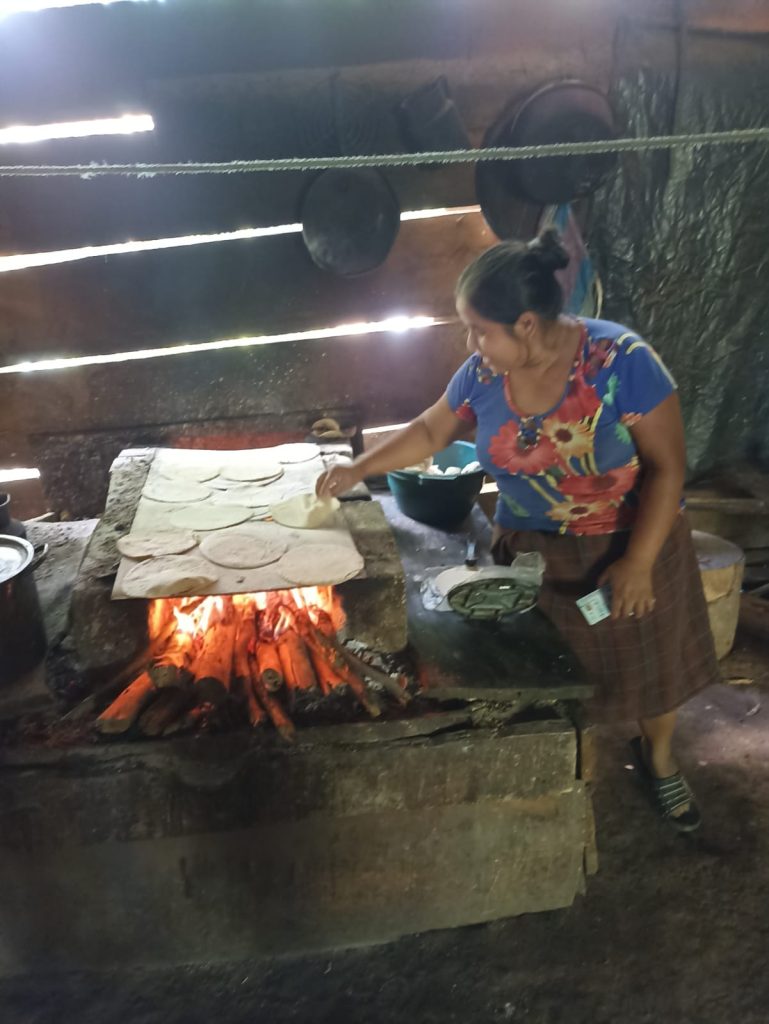

As our team visits the village, we will no doubt hear many more stories of dire health issues caused by poverty, malnutrition, or accidents while we are getting to know our village friends. While we will not solve these issues, we will be able to help the village start to address at least some of them. Our stoves will reduce the amount of wood consumption, meaning less time needed to gather the wood, and allow the smoke to waft outside of the homes through stove pipes rather than in it. Our water filters and water tanks have the potential to reduce disease from water-borne illnesses. And the things that we will haul down for the children, especially the toys and new soccer balls, will bring us the best reward ever – bright smiles and laughter as we walk among them.
Again, thanks to all of you for your interest and support. In the next two posts I will introduce our team members, write more about our supplies and the extensive preparation that goes into one of these mission trips.
Until then,
Brian

Great report. Looks super challenging!
Thanks Carolyn! We appreciate your support.
What an excellent report
God bless each member of the team
Thank you Paul and Maria!